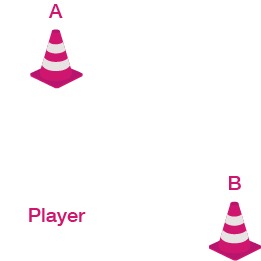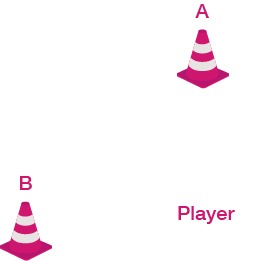There are no items in your cart
Add More
Add More
| Item Details | Price | ||
|---|---|---|---|
By Jude Felix Sebastian Published on: Wed Mar 9, 2022
To avoid being predictable, you could use the dummy or fake and tackle. It is effective in winning the ball back from the attacker. The player starts by faking a tackle towards the left, throwing the stick with the left hand about halfway, and then immediately tackles to the right. The same can be done on the reverse.

Former Indian National Team Captain, Arjuna and Dronacharya Awardee, your coach has capped over 250 matches, including 2 Olympics, 2 World Cups, 2 Asian Games, and 3 Champions Trophy tournaments. He is the founder of Jude Felix Hockey Academy and brings 22 years of coaching experience.
When your tackle gets predictable, it runs the danger of the attacker being prepared and easily slotting the ball into the goal. This is why field hockey skills include a set of techniques that seek to confuse the attacker, creating an opening for the ball to be stolen away before it approaches the goal. The first of these would become clear as you read on. It’s called the dummy or fake and tackle, a move that’s as interesting as the name.
The player’s upper body should be slightly bent forward while maintaining a slight bend in the knees as well. The grip for this tackle involves keeping the hands apart, with the left hand placed on top of the handle and the right hand midway through the stick. The front of the stick should be facing cone ‘A’.

The player starts by faking a tackle towards cone ‘A’, throwing the stick with the left hand about halfway through between the cone and the player, and then immediately tackling cone ‘B’. It is important that the player is on the toes of his feet and not flat footed for this skill. Also, it is advisable to be light on the front foot so as to deliver a strong tackle to the second cone ‘B’.

The player starts with a half rotation of the stick such that the tip of the blade is facing the ground. He then brings the stick to the left and fakes a tackle with the reverse of the stick at cone ‘A’, proceeding to immediately tackle with the reverse stick blade at cone ‘B’. Now that the technique is familiar, let’s look at a useful training exercise. This can be done 1v1 as well, that is attacker vs. defender.
For this, four cones would be placed on the ground, to the left and right, forming two makeshift goal posts. The attacker has to try and get past the defender, crossing into either of the two goals with the ball. And the defender will employ all the different tackles to prevent this, especially the dummy or fake and tackle, and fake and tackle on the reverse.

In case children are the ones doing this exercise, the defender needs to walk and defend while the attacker can run to either of the goal posts. With this, you’ve read up on five tackling techniques, which is more than enough to put up a strong defence in field hockey. Keep reading the upcoming posts to learn about passing techniques next, starting with passing going forward in twos.